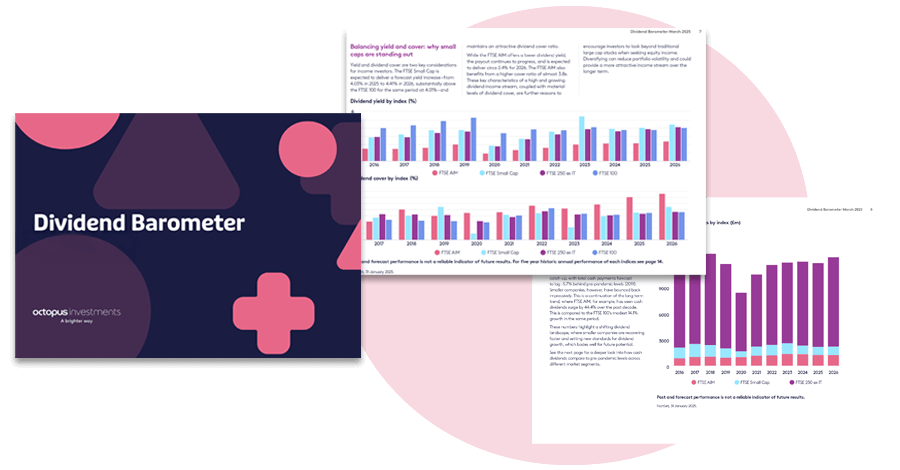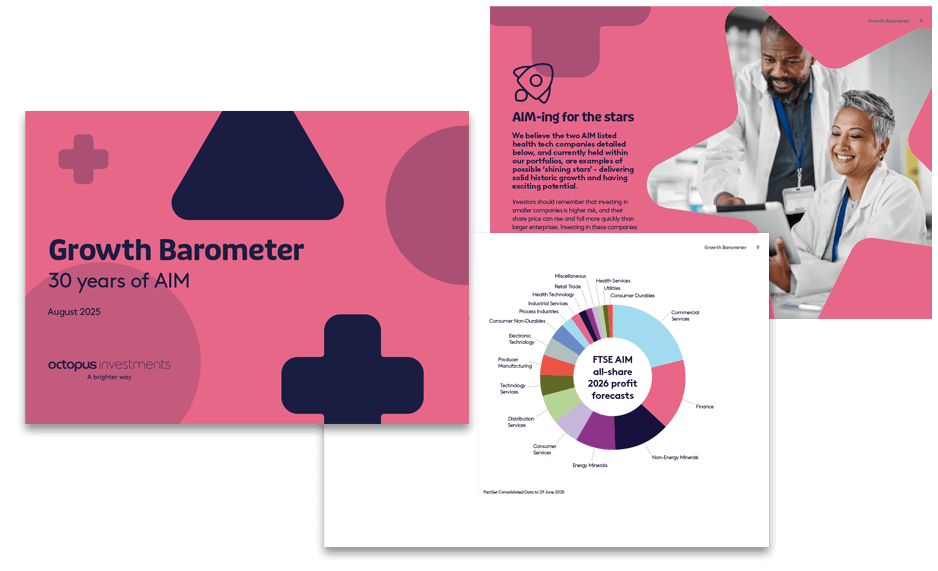With the Alternative Investment Market (AIM) turning thirty this June, we are proud to mark this important milestone that celebrates not only the market’s longevity but also the remarkable ecosystem behind it.
Since its inception in 1995, AIM has continued to play a vital role in backing smaller, high-growth companies by providing ambitious businesses with the access to capital they need to scale. From the entrepreneurs who’ve built businesses on this junior market, to the advisers, investors, and policymakers who’ve championed it along the way, we will be taking the opportunity to reflect on three decades of this dynamic growth market while looking ahead to its future.
A springboard for UK economic growth
Over the past three decades, AIM has supported more than 4,000 quoted companies in raising nearly £136 billion1, with many of these businesses going on to become household names. The market hosts a diverse range of sectors, from technology and life sciences to consumer services and goods – with many of these making a significant contribution to the UK economy. In 2023 alone, AIM-listed companies added £35.7 billion to GDP and directly supported more than 410,000 jobs2.
Importantly, AIM’s impact extends beyond the capital and southern regions, playing a crucial role in driving growth and prosperity across the whole UK. The geographic spread of AIM companies demonstrates the market’s reach into regions such as the Midlands, Yorkshire, the North East, and parts of Scotland and Northern Ireland – helping address regional economic disparities and boosting job creation in their local economies.
A maturing market
Since its launch, AIM has evolved significantly, transforming from a bustling marketplace full of emerging companies into the more refined and focused investment market it is today.
In its early years, AIM experienced a rapid influx of new listings, peaking at over 1,700 companies3. Over time, however, the number of listed businesses has naturally consolidated, and today there are just under 700 companies on AIM4. While this reduction reflects some of the challenges the market has faced, it also signals a maturing ecosystem, where successful companies have progressed by graduating to the Main Market.
Although the total number of listings has decreased, the average market value of AIM companies has grown substantially. Two decades ago, average market capitalisation was £35.7 million5, compared to £101 million6 at the end of last year. Notwithstanding inflation, this is a clear indication that AIM now supports fewer, but significantly larger and more established businesses. Alongside this, trading volumes have risen notably, therefore reflecting improved liquidity and investor confidence. Together, these factors demonstrate AIM’s evolution into a stronger, more mature growth market.
Understanding the risks of investing in smaller companies
It’s important to remember that investments into AIM are high-risk, so you must be comfortable with the associated risks. Their value, and any income from it, can fall or rise. You may not get back the full amount you invest.
The shares of smaller companies could fall or rise in value more than other shares listed on the main market of the London Stock Exchange. They may also be harder to sell.
Strong government support
Throughout AIM’s thirty years, strong government backing through key investment schemes such as Enterprise Investment Scheme (EIS), Venture Capital Trusts (VCTs), and a range of tax reliefs such as business relief has been instrumental in directing substantial funding to AIM. However, in recent years, the marketplace has faced challenges, especially with a slowdown of capital inflows from larger, institutional investors.
This makes the government’s recent Mansion House Accord all the more timely and encouraging. Under this initiative, seventeen of the UK’s largest workplace pension providers have pledged to allocate at least 10% of their defined contribution default funds to private markets by 2030, with a minimum of 5% invested in UK assets, including AIM-listed shares7.
Looking ahead
Looking ahead, our co-founder Chris Hulatt says “As AIM celebrates 30 remarkable years, we’re looking ahead with real optimism to what the next three decades will bring. Our commitment to supporting this vibrant market and the innovative UK businesses it helps to grow remains as strong as ever. At Octopus, we’ve been investing in AIM for over 25 years, and our Quoted team brings together more than 150 years of combined experience, making it one of the most experienced AIM teams in the market8”.
1 Celebrating 30 years of AIM, London Stock Exchange, 2025
2 Economic impact of AIM, Grant Thornton, September 2024
3 Number of AIM companies worth more than £1 billion at nine-year low, AJ Bell, March 2025
4 AIM shrinks by 61 companies in 2024/25, UHY Hacker Young, March 2025
5 AIM market statistics, London Stock Exchange, October 2005
6 Celebrating 30 years of AIM, London Stock Exchange, 2025
7 Pension schemes back British growth, HM Treasury, May 2025
8 Octopus Investments, March 2025









